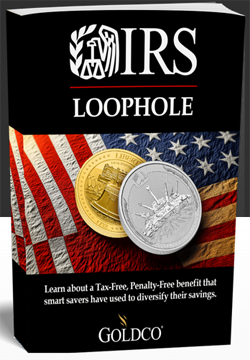
Thank you for visiting our gold IRA tax rules ultimate guide for 2025. In this article, we’ll explain everything you need to know about how gold is taxed in an IRA and popular bullion to include in your gold IRA. We’ll also cover the most common FAQs about gold IRAs and taxes.
Gold IRA Tax Rules: Introduction
How much genuine precious metal do you have in your retirement account? Contrary to popular belief, investments in precious metals IRAs are not prohibited or discouraged by the Internal Revenue Service.
However, there are conditions that must be met.
Disclosure
For starters, the obligatory disclosure for a post like this: You should always consult with your trusted financial advisor and a tax professional before moving forward with any investment decisions. This will ensure that you make the best investment and tax-related decisions for your unique situation.
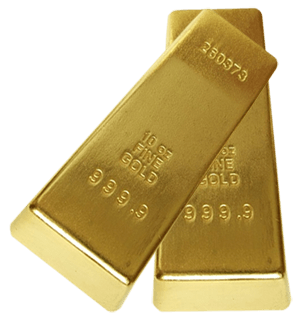 While a self-directed IRA offers greater investment flexibility, it’s essential to note that you cannot personally oversee the custody and storage of your individual retirement account. Unless you possess an IRS-approved bullion depository and have expertise in custodianship, your account management and bullion storage will be entrusted to third-party entities.
While a self-directed IRA offers greater investment flexibility, it’s essential to note that you cannot personally oversee the custody and storage of your individual retirement account. Unless you possess an IRS-approved bullion depository and have expertise in custodianship, your account management and bullion storage will be entrusted to third-party entities.
More often than not, this is mediated by what are known as gold IRA companies, which usually provide the bullion for the retirement account as well.
Subsequently, gold IRAs are subject to tax regulations that closely resemble those applicable to other retirement vehicles of a similar nature. These regulations encompass rules governing contributions, withdrawals, and IRA inheritances, regardless of whether they originate from you or another party.
Firstly, let’s dive into what the IRS considers acceptable physical precious metals for inclusion into an IRA.
If you’re ready to take action
What Precious Metals Are IRA-Eligible?
Which metals go into a gold IRA will primarily depend on purity. Depending on how much of a precious metals component they contain, each of the four precious metals may or may not be allowed in an IRA.
The following rules apply to each metal:
- Gold bullion should have a minimum of 0.995 purity
- Silver bullion should have a minimum of 0.999 purity
- Platinum should have a minimum of 0.9995 purity
- Palladium should have a minimum of 0.9995 purity
Including items that violate this requirement can lead to penalties and account liquidation, making it essential for buyers to exercise caution.
When collaborating with a reputable gold IRA company and custodian to acquire bullion, such issues are rare since they offer guidance on permissible items.
An essential requirement is that bullion rounds and bars of any of the four precious metals must be produced by a COMEX or NYMEX-approved refinery. In essence, an IRA can solely be used to acquire bullion from recognized mints, whether they are sovereign or private.
Purchasing from reputable sources typically mitigates any complications since the majority of mints adhering to these standards consistently produce rounds and gold bars with the necessary certifications, clearly indicating their eligibility for IRAs.
Popular Bullion To Include In A Gold IRA
Here are some popular coin choices for a gold IRA:
Gold
- American Gold Eagle bullion and proof, due to an exception
- American Buffalo bullion
- Canadian Gold Maple Leaf bullion
- Australian Kangaroo bullion
- Austrian Gold Philharmonic bullion
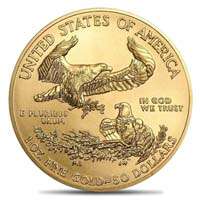
Silver
- American Silver Eagle bullion and proof, due to an exception
- Australian wildlife and Lunar bullion silver coins
- Canadian Silver Maple Leaf bullion
- Austrian Silver Philharmonic
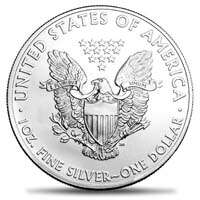
Platinum
- American Platinum Eagle bullion and proof, due to an exception
- Canadian Platinum Maple Leaf bullion
- Australian Platinum Koala bullion
- Isle of Man Noble coins

Palladium
- American Palladium Eagle bullion and proof, due to an exception
- Canadian Palladium Maple Leaf bullion

Popular Bullion To Include In A Gold IRA
You’ve likely observed that we discussed an exception regarding American Eagle coins, and you may be familiar with the “no collectibles” rule concerning self-directed IRAs. In reality, despite the passage of time, this rule remains somewhat ambiguous.
The American Eagle stands as the sole coin with a clear exception outlined for both bullion and proof versions, primarily because it holds the status of national legal tender. This exception not only encompasses American Gold Eagle bullion coins that may not meet the purity criteria but also includes their proof and uncirculated counterparts.
Typically, any proof coin is deemed a collectible, rendering it ineligible for inclusion. However, eligibility is primarily determined by purity, a criterion satisfied by American Buffalo coins.
Due to concerns about potential IRS treatment, many bullion dealers refrain from selling coins to an IRA, even including proof American Buffalos. Although these coins meet the stipulated requirements, they are often omitted from IRAs for caution’s sake.
In other words, the only proof coins you should feel comfortable adding to your precious metals IRA until greater clarity is presented are American Eagles.
Gold IRA Tax Rules On Withdrawals
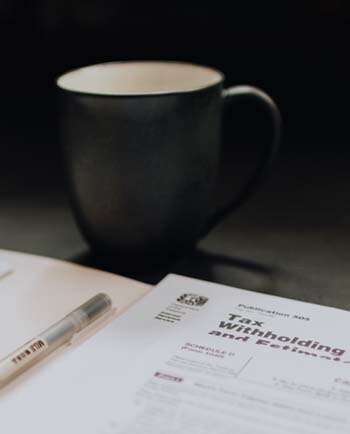 You might have heard that there are 2 main types of retirement accounts for the storage of precious metals: Traditional IRA and Roth IRA.
You might have heard that there are 2 main types of retirement accounts for the storage of precious metals: Traditional IRA and Roth IRA.
Depending on your choices and how you want to handle your IRA in the future, each has advantages and disadvantages.
You can fund your newly created self-directed IRA with any number of Traditional or Roth IRAs, as well as other employer-sponsored plans, even though it must be given one of these two types.
1. Traditional IRA
The Traditional IRA offers the advantage of tax-deductible contributions but comes with the drawback of imposing penalties for early withdrawals.
Here’s what each aspect entails:
In the first scenario, contributions to the IRA are often referred to as pre-tax. This means that the funds used to finance it are deducted from your annual taxable income.
In return, the funds withdrawn from the IRA will be subject to taxation based on your annual gross income. Typically, withdrawals from a Traditional IRA should not be made before reaching the age of 59½, as doing so incurs an early withdrawal penalty of 10%, in addition to the eventual tax liability.
Similar to the Roth IRA, early withdrawals are permitted in cases of “necessity,” such as purchasing a first home or securing health insurance for an unemployed account owner, without incurring penalties.
It’s also worth noting that a Traditional IRA mandates that you commence taking required minimum distributions by age 70½, failing which you may face a 50% tax on the annual amount you were supposed to withdraw.
The Traditional IRA is ideally suited for those seeking to treat their retirement account as a more secure or stable pension fund, one that invests in precious metals and is under their personal oversight, along with designated individuals.
If you’re ready to take action
2. Roth IRA
While it shares the exception we mentioned earlier, a Roth IRA differs from the Traditional variety in several key ways.
Contributions made to a Roth IRA are not tax-deductible; they are treated as an investment and are subject to an earnings tax, unless you are older than 59½ or have held the account for over five years.
With a Roth IRA, you are not liable for the 10% early withdrawal penalty if you withdraw money before the age of 59½. Furthermore, withdrawals made after retirement are not subject to taxation. This also means that the assets within the IRA are exempt from capital gains tax.
Another advantage of the Roth IRA is that it does not require you to commence taking distributions by age 70½, providing you with more flexibility. However, this does not apply to individuals inheriting a Roth IRA, as beneficiaries are required to either take a distribution or roll the IRA into a new account.
The Roth IRA is ideal for those seeking a tax-advantaged investment portfolio rather than a traditional pension fund. It is also suitable for individuals who may need to make early withdrawals from their retirement account for various reasons.
Beneficiaries: Inheriting An IRA
In terms of taxation, the Roth IRA once again emerges as the more advantageous choice. Beneficiaries who inherit a Roth IRA can withdraw gold and other precious metals from it without incurring taxes, whereas beneficiaries of a Traditional IRA will be required to pay taxes on withdrawals.
Withdrawals can be made from an inherited IRA left by someone who passed away before the age of 59½ without incurring the 25% penalty (2025 update). However, the account’s maturity remains a critical factor, as inherited Roth IRAs are ideally expected to be older than 5 years to avoid penalties.
Furthermore, there is a significant degree of flexibility when it comes to choosing how to withdraw the precious metals from the inherited IRA. You can opt to roll the account over, withdraw the physical precious metals, or liquidate them to receive cash instead.
However, there is a general 5-year period within which all funds in an inherited IRA should be withdrawn by the beneficiary. This period can be extended, often significantly, depending on various factors, including the previous owner’s age, your age, your relationship with the benefactor, and other considerations.
For further clarification on whether the withdrawal period can be extended, it is advisable to consult the IRS directly or seek advice from a tax advisor.
Be Aware Of Gold IRA Lies
Request this FREE Gold IRA Lies Guide to avoid scams
Gold IRA Tax Rules FAQ's
Lastly, here’s a summary of our Gold IRA Tax Rules in an easy FAQ format.
How is gold taxed in an IRA?
Your choice of a Traditional or Roth IRA, as well as your income bracket—another crucial factor—will determine the tax regulations for your IRA.
After they start receiving distributions, holders of traditional gold IRAs must pay income taxes; holders of Roth IRAs must pay taxes on their gold holdings similarly to other investments.
Unless the IRS determined that the bullion in your IRA violated the “collectibles” rules, gold assets in IRAs are excluded from the 28% collectible tax rate.
Is gold IRA tax-free?
The only Roth IRA that qualifies as “tax-free” is one you inherited. People who inherit Traditional IRAs must normally take their full distribution within 5 years and pay taxes when they do so.
Traditional and Roth IRA owners both pay taxes on their accounts, but they do so in different ways. To put it simply, a Roth IRA charges you upfront or as you go, but a Traditional IRA taxes you after retirement.
Can I take physical possession of the gold in my IRA?
If a gold IRA owner doesn’t have access to a bullion depository, they aren’t permitted to hold the bullion themselves while the account is open. You can withdraw any or all of the bullion from your gold IRA whenever you want, regardless of whether you own it or inherited one.
If you have, however, taken some of it, it will be considered a distribution and you will be taxed in accordance with the criteria mentioned above. Depending on what else the IRA had, if you remove all the gold, the account may be emptied and subsequently liquidated.
In general, though, provided you’re prepared to pay the distribution penalty, you can access the actual gold in the IRA at any time.
How do I avoid capital gains tax on gold?
Before buying or selling any precious metals, speak with a tax expert to avoid any unpleasant surprises when it comes time to file your taxes.
Gains and withdrawals from a Traditional IRA are taxed like ordinary income, as was previously stated. The capital gains tax is essentially abolished in the case of the Roth gold IRA.
Precious metals IRAs have proven to be an incredibly popular way to buy gold, and for good reason.
What are the contribution limits for a gold IRA?
The annual contribution limit for IRAs remains at $7,000 for 2025, with a catch-up contribution limit of $1,000 for those 50 and older.
What are the income limits for a Roth IRA?
The income limit for contributing to a Roth IRA in 2025 is $150,000–$165,000 for singles and heads of household, and $236,000–$246,000 for married couples filing jointly.
If you’re ready to take action
To learn more, you can start by requesting this Free Gold IRA Guide now!













